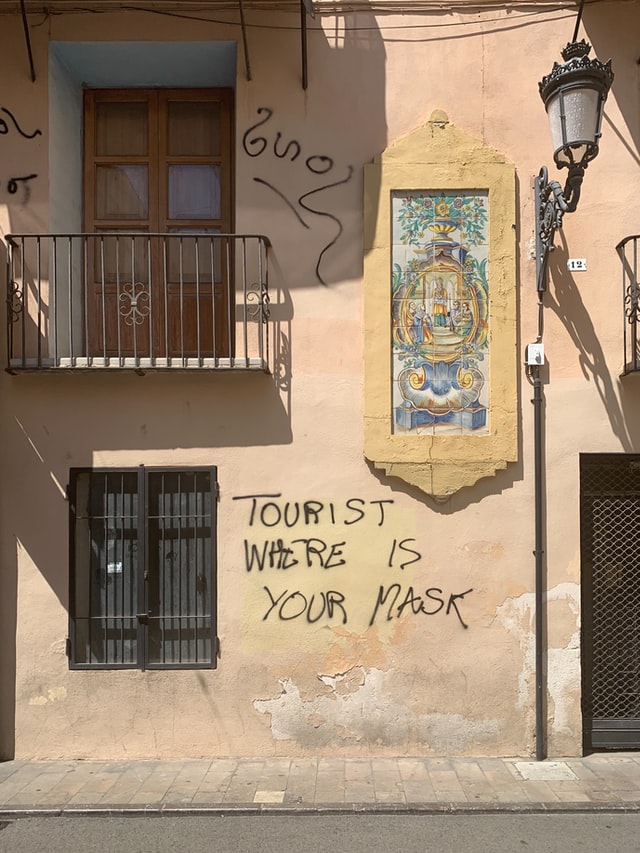The Hot Fall
A protests’ guide from Chile to Hong Kong for ‘dummies’.
Nowadays the world is crossed by a hot Fall caused not only by the Climate Change – that it is destroying our planet - but also by unique protests from Chile to Hong Kong.
Some protests have taken inspiration from each other on how to organise and advance their goals while others have begun for similar reasons in several countries miles apart.
In this guide for dummies, we will explain what a protest is and will show two main, concrete and current examples: the Chilean protests and the Hong Kong protests.

Protest, riot and strike: what’s the difference?
Our minds bring us to the French Revolution or to the Industrial Revolution when the TV or the newspaper show us that in several countries there is a crisis.
We read and listen from the main communication channels that there were protests or strikes or even riots which brought out the crisis. So what are the difference between those actions? Here is a tiny guide!
- A protest is an expression caused by words or actions with regard to particular events, situations or policies. Protests can take many different forms - from individual statements to mass demonstrations. Protests may be organized as a way of an attempt to influence the public opinion or government policy, or they may be undertaken as direct action in an attempt to obtain desired changes. Where protests are part of a systematic and peaceful nonviolent campaign to achieve a particular objective, and involve the use of pressure as well as persuasion, they go beyond mere protest and may be better described as cases of civil resistance or nonviolent resistance.
- A riot is a civil disorder which is characterized by a group of people or movement lashing out in a violent public disturbance against authorities, people or propreties. It incluedes also theft and vandalism.
- A strike action is a work stoppage, caused by the mass of workers who refuse to work. It take place when there are employee grievances- such as low salaries, excessive work hours, limited worker rights etc…
The Chilean protests: the caliente demonstration.
What is happening in Chile? Why was everybody protesting in the streets? Why was it considered “the worst civil unrest” of the Chile’s history?
Imagine you live in a country where rich people become richer and richer and poor people become poorer and poorer day by day.
Imagine also you live in a country where there’s no equality and meritocracy.
Well, welcome to the sunny and funny Chile!
The straw that broke the camel’s back - leading to the ongoing protests - was the raise in the Santiago metro’s subway fare. Indeed, it increased the cost of living, while the privatisation and inequality were already prevalent in the country.
That’s why students of the secondary school started a fare evasion campaign which led to spontaneous takeovers of the capital’s main train stations and open confrontations with the Chilean Police.
Really funny, huh?
But the violence of the protests reached their top on the 18th of October when the Chilean President Sebastián Piñera announced the state of emergency, authorizing the deployment of Chilean Army forces across the main regions to enforce order and prevent the destruction of public property, and invoked before the courts the Ley de Seguridad del Estado (“State Security Law”) against dozens of detainees.
During the protests a lot of human rights organisations have received several reports of rape, sexual abuse and violence conducted against protesters by the army forces.
And that’s why that on the 25th of October the protesters from all over Chile continuosly demanded the resignation of Piñera who in the meanwhile changed eight ministers of his Cabinet in response to the unrest and dismissed the Interior Minister. Luckily, in the end, most of the political parties represented in the National Congress signed an agreement on the 15th of November to call for a national referendum on April 2020 regarding the creation of a new Constitution.
A happy ending. Maybe.
Hong Kong’s protests: a patient route to democracy.
There are many causes behind the Hong Kong protests, but the main one was the introduction of the Fugitive Offenders amendment bill [^1] by the Hong Kong government. However other causes - demands for democratic reform, the release of those who have been arrested and sentenced to jail, for the establishment of an independent investigation team about the police violence, a fair voting system - have been pointed out.
The Fugitive Offenders amendment bill would have let local authorities detain and extradite criminal fugitives who are wanted in territories with which Hong Kong does not currently have extradition agreements, including Taiwan and mainland China. This created concerns that the bill would subject Hong Kong residents and visitors to the mainland Chinese jurisdiction and legal system, undermining the region’s autonomy and Hong Kong people’s civil liberties, if enacted.
In a few words this means that if you commited a crime or something related you could be punished by the Chinese legislation and not by the Hong Kong one! In fact Hong Kong is a special administrative Region of The Popular Republic of China under the principle of “one country, two systems”[^2], so it has a different political system than the Chinese one!
Despite the pacific protests, the reaction of the authorities were very rude and the violence of the protests incredibly increased. So on the 1st of October there was a large demonstration where a 21 year old student protester was shot whilst attempting to hit a police officer. The unsolved death of the student – but also deaths of other protesters – increased the demonstration. The protesters occupied university campuses and blocked the traffic nearby. The police retaliated by besieging the Chinese University of Hong Kong (CUHK) and Hong Kong Polytechnic University (PolyU) which resulted in high number of injuries from both sides and mass arrests.
Fortunately the protests finally subsided on the 24th of November when the 2019 Hong Kong local elections took place. The affluence of the voters was impressive and the results showed that the pro-Beijing and independents were completely wiped out from the Parliament.
A great achievement for the Region which took a lot of months!
Conclusion
The hot Fall spinning around our beautiful planet is becoming less hotter thanks to the protests but something is certain- winter is always coming to cool the jets.
Valeria Peruzzi
SOURCES:
https://en.wikipedia.org/wiki/2019_Hong_Kong_extradition_bill
IMAGE CREDITS:



